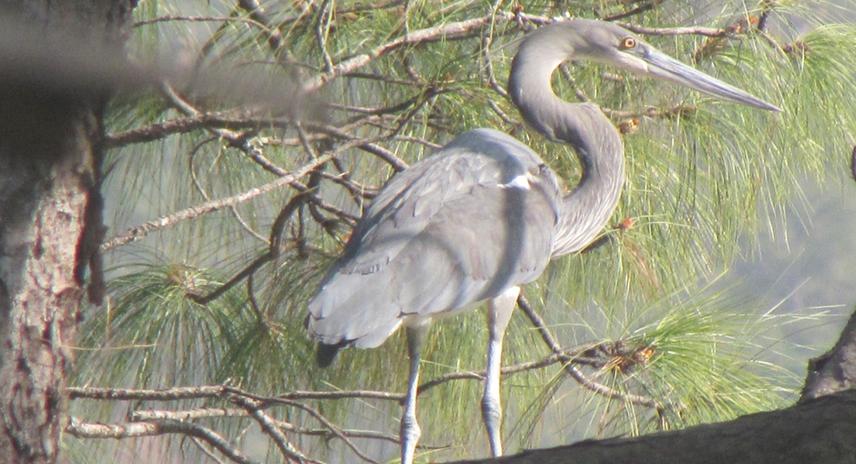Rabten
This project is aimed for better understanding the nesting and roosting habitats of the White-bellied heron. It will also generate information on the threats and perception of local communities towards WBH conservation.

White-Bellied Heron.
This proposed research is designed to work towards a better future for critically endangered White-bellied Heron (hereafter referred to as WBH), and the local communities around its habitats. The study will be conducted along the stretch of Mochu and Phochu rivers under Punakha district. Majority of the study area falls under Jigme Dorji National Park (JDNP), located in the north western part of the country.
WBH is a species on the edge of extinction with a small and rapidly declining population. The worldwide population is roughly estimated at 200 individuals, and WBHs are among the 50 rarest bird species on earth (WWF, 2015). This heron is classified as critically endangered in the IUCN Red List of Threatened Species because of its extremely small and rapidly declining population (BirdLife International, 2013). Again this decline is projected to increase in the near future as a result of the loss and degradation of lowland forest and wetlands, and through direct exploitation and disturbance (BirdLife International, 2015). Similarly, the forest ecosystem along the habitats of WBH in the study area is experiencing rapid transformation under the influence of a wide range of human and natural disturbances like forest fire, construction of hydropower dams and human population.
The social surveys, awareness campaigns, meetings, field survey and data collection on species composition and vegetation structure of WBH habitats will be done to fulfill the research objectives.
This study is expected to have a several long term conservation impacts towards the species as well as the local communities. This research would assist in understanding more about the roosting and nesting habitats preferred by the WBH through recording valid and accurate information. It will also provide information regarding attitudes of local communities towards the conservation of bird. Many local communities are expected to benefit from this research and working towards WBH conservation as it is a flagship species that could attract lots of bird enthusiasts around the globe. Moreover, the results and findings from this research will link the local communities, researchers, conservationists, expertise and the decision makers to work together towards the conservation of species from extinction and recovery of their population through implementing immediate intervention measures.
Therefore, continued research, monitoring and evaluation are important fields of study to provide a scientifically valid justification and to make a strong statement towards species conservation and recovery of their population.